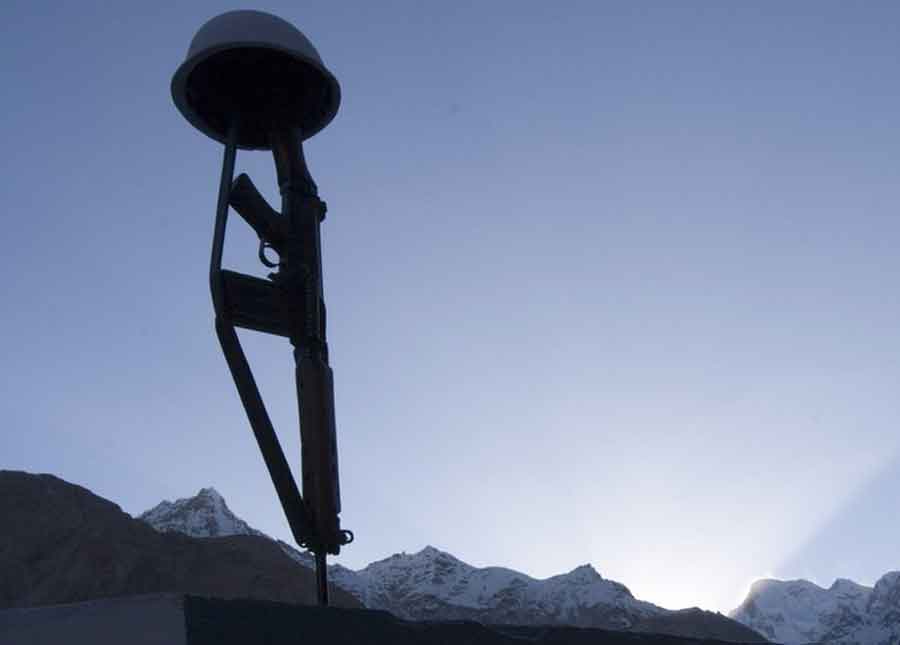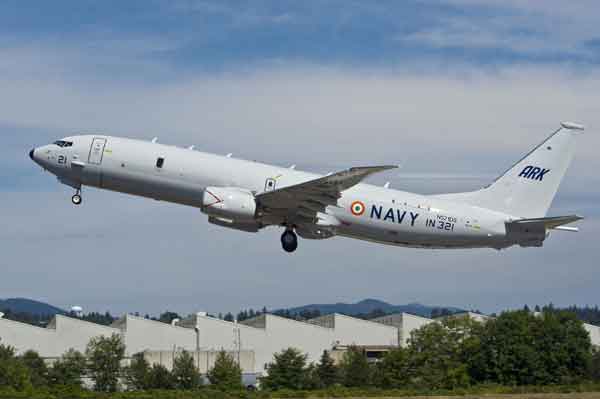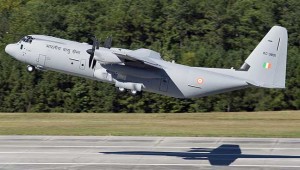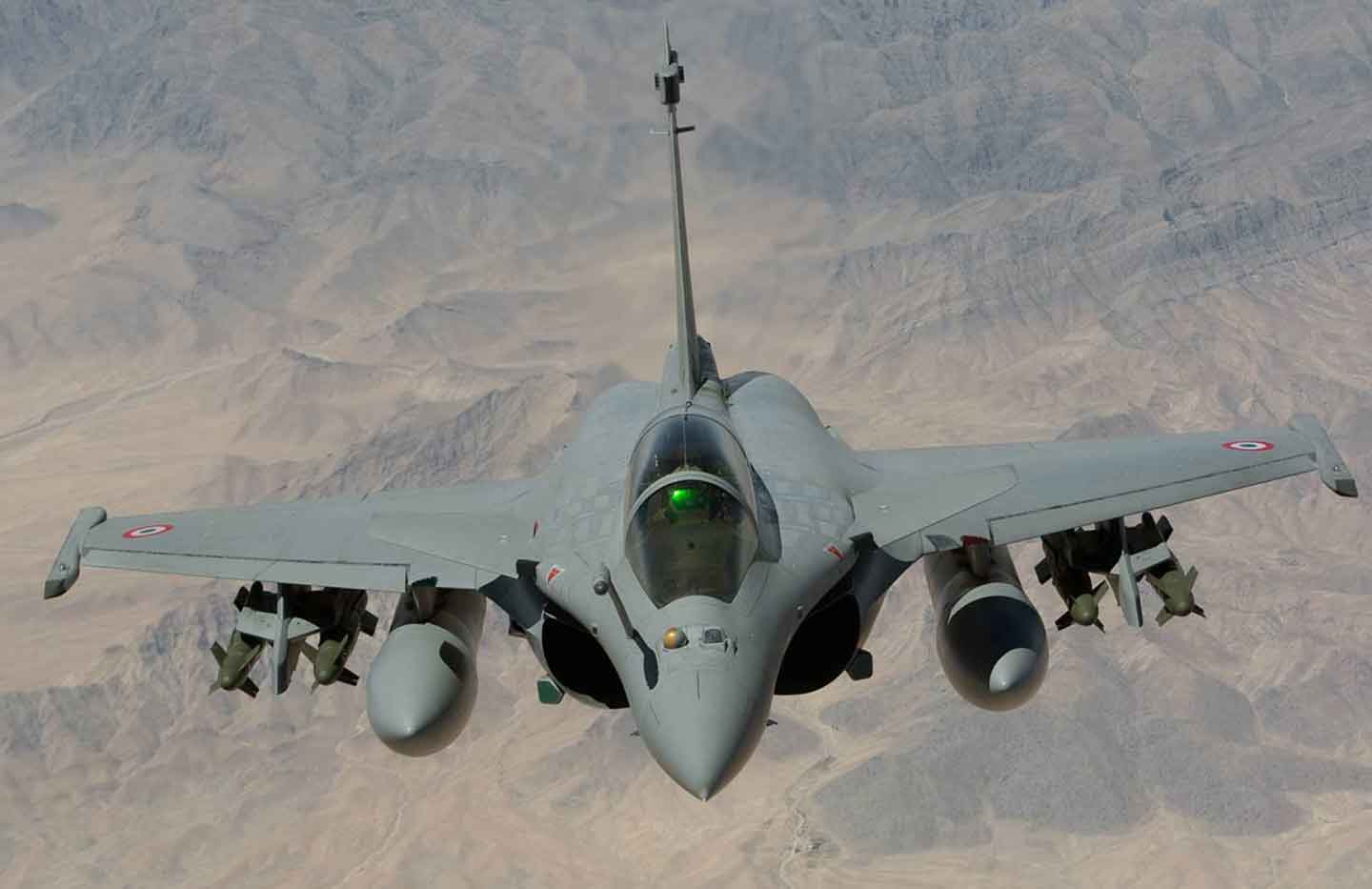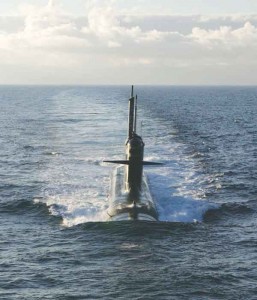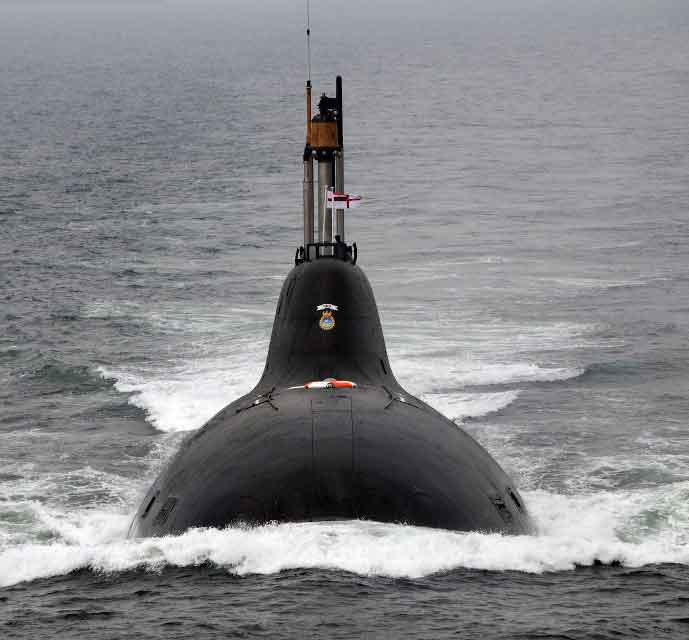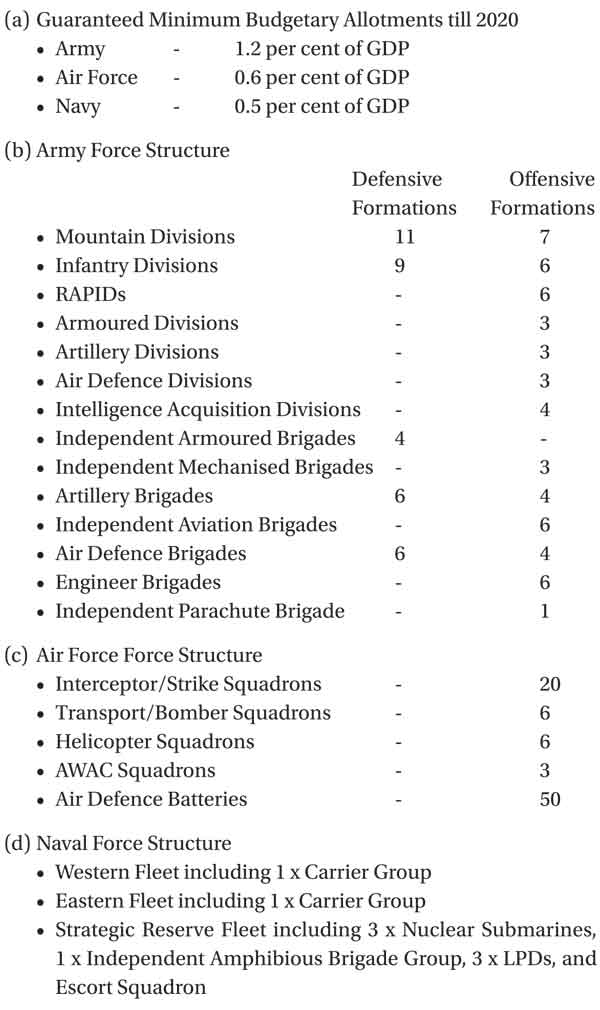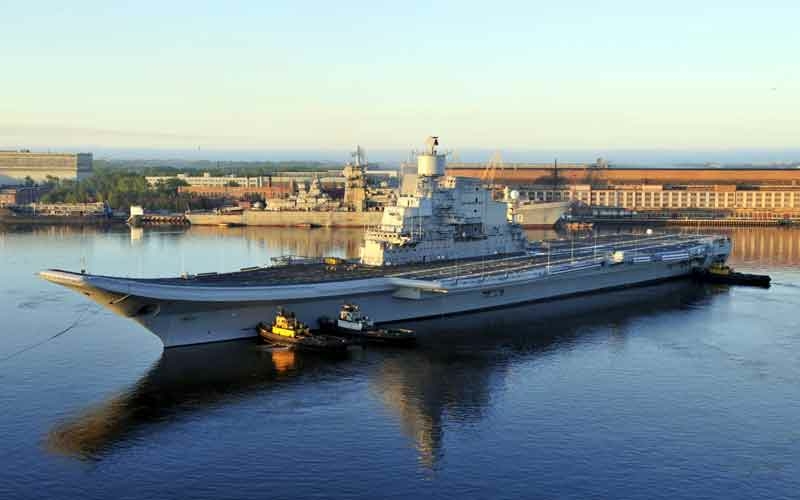To sustain the capability to fight a protracted war, it is essential that a significant portion of India’s defence production gets exported. This requires dedicated support from the Ministry of External Affairs which should be made responsible for finding markets and meeting sales targets, the Ministry of Finance for arranging financial support packages and the Ministry of Commerce for working out offsets and commodities barter. Waging a protracted war also requires setting up of a strong propaganda, psychological warfare and media management apparatus as adjuncts to the armed forces within the MoD which should work in close coordination with the Ministry of Information & Broadcasting and Ministry of Home, all under the supervision of the Cabinet Secretariat.
The Indian military machine as well as India’s political leadership is presently geared to fight an intense short-duration war. A war with Pakistan is not expected to last more than four weeks and that with China, a maximum of eight weeks. The reality, however, is that nothing is ever conclusively predictable about war. The vital and nameless bureaucratic echelons that control the purse strings lack strategic foresight or are accountable for the efficient management of national defence. They are answerable only to themselves and the responsibility for any failure has to be borne primarily by the Armed Forces.
A strong national defence does not imply escalating the defence budget to unmanageable limits…
The ‘Forty’ Secretaries of various grades manning the Ministry of Defence (MoD) and Defence Finance are adept at delaying proposals through endless questioning. They regularly surrender allotted budgets thereby helping the government of the day to narrow down its burgeoning fiscal deficit. A strong national defence does not necessarily imply escalating the defence budget to unmanageable limits; it actually involves planning ahead to efficiently achieve what is practically attainable over the next ten years by removing all types of friction and inertia within the MoD as well as in the supporting ministries, in matters regarding national defence. There must be stringent provisions for sacking anybody not delivering results based on the recommendation or lack of confidence expressed by the Armed Forces Chiefs. It was primarily because this long-term strategic vision was lacking, that India lost out two vital decades of development after the Sino-Indian Conflict of 1962 and Indo-Pak Wars of 1965 and 1971, which caused sudden and unrealistic expansion of defence spending at the cost of everything else.
Had there been proper foresight and preparation of India to fight a ‘Protracted War’, after the 1948-1949 Indo-Pak War over Kashmir and the triumphant march of the Chinese PLA into Tibet and East Turkistan (Xinjiang meaning ‘New Dominion’) in 1950, we could have achieved spectacular economic development like South Korea, Taiwan or Israel, who also face high threat scenarios and emphasize heavily on national defence development and consolidation.
As a nation we not only practice ‘strategic indecision’ but also never learn from our past mistakes…
Clausewitz had described war as a trinity composed of the ‘policies of the respective governments, the activities and attitudes of their militaries, and the passions and typical national characteristics of their peoples.’ If this be correct, then it is a wonder as to why policy makers in India are so very complacent instead of being hard-nosed like Henry Kissinger who could make even Mao agree to his propositions, not because he was respectful but by dealing from a position of strength. Can any sane and responsible Indian planner expect the Chinese to give up their claim to Aksai Chin region through which their strategic Lhasa-Kashgar highway passes, or their claim in Arunachal to strengthen their fragile and forcible hold over the sensitive Xigatse-Lhasa-Bomi region?
Over the millennium, the Chinese have perfected the art of being patient, pragmatic and artful negotiators. There is no element of sentimentality in the conduct of their foreign policy and national aims have to be achieved without risking defeat. In the case of Pakistan, it considers itself to be the successor state of the Mughals and that it has the right to rule over the entire Indian subcontinent. The ‘liberation’ of Kashmir is only a smokescreen for their permanent agenda of dismembering India by whatever means or alliances. Permanent peace with Pakistan will remain a distant dream if we are militarily weak or can be trapped into a coercive situation by a combination of adverse factors. India’s geography and population dictate that it has to be a first rate land power and a reasonably strong naval power in order to safeguard its political stability and destiny.
The Concept of Defensive Offence
General Mirza Aslam Beg, the ex-Pak Army Chief made famous his concept of ‘Offensive Defence’ during the conduct of Exercise and Wargame Zarb-e-Momin in 1987. But today, this concept cannot work as the nuclear threshold cannot be exceeded. In a democracy like India, popular support cannot be mustered for any suo moto offensive action against other nation states. But national ire and mass support does suddenly build up if we feel wronged, cheated or attacked first. Clausewitz had effectively proved nearly two centuries past that the ‘Defensive’ is the stronger form of war than the ‘Offensive’, a fact that the British took to heart but the Germans quickly forgot.
A country which cannot keep its eyes and ears open and has poor intelligence gathering capabilities cannot establish sustainable border claims…
Therefore, India’s war strategy has to be based on firstly fighting successful defensive battles, thwarting the attacker, sapping his offensive prowess and thereafter going on purely limited offensives working beneath the nuclear threshold. Now what constitutes a ‘nuclear threshold’ has to be clearly imagined. Broadly speaking, we must not launch an offensive going more than 50 kms into enemy territory. Secondly, no major city like Lahore or Lhasa should be threatened.
To fight a successful defensive battle, the Indian Army has to give up its entrenched philosophy of ‘linear defence’, which it had adopted succumbing to political pressure, whether it be the so called Forward Policy in dealing with China or the string of FDLs and DCB versus Pakistan. To be successful, defensive operations have to be elastic, as the hard learned lessons of WW I and WW II have taught at great human cost. The enemy has to be stopped in ‘our depth’ and subjected to attrition and annihilation there. This can never be accomplished at the ‘Forward Line’ which can always be smashed by following the Principles of Surprise, Deception and Concentration of Force. Our defensive plan has to be based on the three-tier system of strong points which can sustain isolation or attrition for up to seven days by which time, stabilisation actions can get completed and the enemy’s attack will run out of steam compelling him to regroup and redeploy to his disadvantage.
A ‘Defensive Offence’ philosophy calls for maintaining a sufficiently strong force structure which will make the opposing country bleed during periods of ‘No War’, in playing the game of catching up. China burns three litres of diesel in order to get a litre of diesel to its frontiers in Tibet and Xinjiang. India is basically a land power which also has a long and vulnerable coastline. Both are important, but land frontiers are historically, most critical. It is very relevant to state that in today’s time, no land war can be won decisively without creating a ‘favourable air situation’. So land and air operations have to be closely coordinated and integrated over at least 50 kms inside enemy territory.
Strategic bombing should be undertaken only in the context of its propaganda value and must be given less emphasis. Mobile reserves should be held back in depth so that concentration and surprise can be achieved when they are launched. The primary aim should be to destroy the enemy’s war potential. Prevention of territorial loss should come as a secondary objective, as territory temporarily lost, can always be regained with bonus during the riposte launched in the course of a protracted war. Taking a case out of history, ancient Rome became the world’s first superpower after it defeated Carthage in spite of the latter’s able general Hannibal by adopting a defensive strategy first and thereafter, unleashing a protracted war. Rome was a world power for nearly six centuries after that whereas Alexander’s empire withered soon after his death.
Influence of Culture and Conscience on India’s Military Ethos
As a nation we not only practice ‘strategic indecision’ but also never learn from past mistakes. The slow and overcautious decision making process of the government is compounded by the ‘delayed’ implementation policy by the all power wielding civilian bureaucracy, thus causing a mismatch between national intentions and military capability. After Independence, India’s policy makers failed to correctively gauge the reality of the use of military force in dealing with nations especially over boundary issues. We had not realised the importance of securing and manning borders and creating the necessary roads and logistics support infrastructure. When China intervened militarily in the Korean War and faced up even to the US, we did not get rattled and kick-start our military buildup. We were happy grandstanding, doing the peacemaker’s job everywhere and enjoying the photo opportunities.
True indigenous manufacturing and making of next generation models has been given the go by…
The terrible neglect of Military Intelligence could be gauged from the fact that the Chinese could construct a motorable highway through inhospitable frontier regions claimed by India on ‘maps’ – across River Indus in the Demchok area and through Chang Chenmo, Linzi Thang, Aksai Chin and the Soda Plain regions, over three annual working seasons thus connecting Gartok in Western Tibet to Kashgar in Southern Xinjiang, without being detected until 1957! The Chinese Premier Zhou en Lai’s suave excuses that the old Quomingtang maps need to be updated and revised first and thereafter the borders can be finalised and settled with India were taken at face value in 1956 by our self-deluding policy makers. In one stroke we surrendered our moral authority over the uninhabited areas across the Karakoram up to the Kun Lun Range which we had always claimed, as in actual practice – physical possession is nine-tenth of the law, and not boundary lines drawn on one’s own published maps!
The Indian military was and still is, acutely short of specialists knowledgeable in languages spoken across India’s border regions. The tradition of the government sending joint annual military, Survey of India, mineral exploration department, botanical department, wildlife department expeditions in all border tracts has died down after Independence. The prestigious Macgregor Gold Medal, once the pride of British Indian Army officers and which was awarded by the USI for significant border area exploration reports, has all but been forgotten. A country which cannot keep its eyes and ears open and has such poor intelligence gathering capabilities – cannot establish sustainable border claims merely based on legalistic points and Survey Reports of British explorers of the mid-nineteenth century or by drawing lines on maps after we had gained Independence.
It was this tragic flaw which the ground-sure Chinese quickly exploited to the hilt. These remote regions which are now in China’s possession do not have any economic or strategic importance for India but due to the hysterical propaganda built up before and after the 1962 War, they have highly sensitive political connotations – which can be undone only if the Parliament gives its prior approval for a honourable negotiated border settlement. Such a possibility is highly unlikely for several decades to come, and it would be in India’s interest to let the India-China border issue remain unresolved.
China is also unlikely to come to an agreement as that would reveal its actual reason for precipitating the border war, which was to humiliate India for giving refuge to the Dalai Lama and his fleeing religiously minded hapless Tibetans – thus causing it severe loss of face; undermining the Chinese moral authority to rule over Tibet without keeping the Dalai Lama as its puppet, and getting acceptance to its existing governing dispensation by the indigenous population.
Instead of starting capability building after suffering a fiasco, it is far better to maintain a maximum level of military capability that our country can afford. Being a developing country that maintains democratic traditions, our political leadership is compelled to focus on short-term solutions which pay electoral dividends thus putting difficult and long gestation defence related programmes on the backburner. Most do not realize that just possessing nuclear weapons and strategic missiles is not enough as these are only weapons of last resort. India’s twin advantages of having a large youthful population and consistent economic growth needs to be harnessed, to maintain a large size and modernised military muscle as an instrument of deterrence, which is readily available. Rome was respected only as long as it had its undefeatable legions and superb battle fleets.
India’s Achilles heel is its military industrial complex. The corrupt and lazy mentality of the ruling elites has ensured that defence manufacturing has not been thrown open to the vibrant private sector. India’s 39 Ordnance Factories, 53 DRDO Labs and Production Establishments, and six mega Defence PSUs have degenerated due to ‘manipulated’ functioning without competition, to presently become virtual canalizing agencies assembling imported CKD Kits and putting the ‘Made in Bharat’ stamp on them often paying two to three times the cost of the same equipment readily available off the shelf!
India’s Achilles heel is its military industrial complex…
True indigenous manufacturing and making of next generation models has been given the go by because there is no ‘ban’ from the exporting nations like the FMCR, MTNPR or Entities List, which have actually benefited our Atomic Energy Commission and ISRO, who were forced to do indigenous development for everything. Presently it appears alright to import equipment from a private or state-owned foreign manufacturer. If this be so, why then should we not allow 100 per cent foreign investment in the defence sector from the present 26 per cent? No self-respecting foreign manufacturer is keen as he cannot take the risk of divulging technological secrets except of such equipment which are obsolescent. If we dare to do this, then we will leapfrog ahead of China in defence technology within six years because we are such a huge market that no manufacturer can really afford to ignore us.
The government entities will also naturally evolve once they face the heat as had been the case in Israel and France. No group of public sector employees will allow their entity to shut down. The retirement age for people working in defence R&D establishments and OFB/PSU set ups should be reduced to 54 years, and highly productive personnel should be given three-year extension contracts thereafter. The government needs to be liberal in allowing defence products exports to authorised countries, as 50 per cent value of exports is required to sustain indigenous R&D and setting up of commercial production lines. Another important aspect is that clear time lines should be laid down for a weapon system acquisition process – say a maximum of 12 months for trials, one month for modifying the technical specifications of the GSQR in a transparent manner based on the trials inputs, one month for submission of financial bids, and one more month for offsets negotiations before awarding the contract.
This timeframe should be inflexible. Contracts should never be cancelled if there are allegations of kickbacks as this is a natural fall-out of competition but simultaneous enquiry be carried out and a provision for discount equivalent to twice the bribes offered (without waiting for any court verdict) should be incorporated into the contract. Contract for indigenous manufacture and production line set up should be for the next model of that type of equipment even if the same has to be jointly developed, as it is cheaper and qualitatively superior to buy off the shelf from existing manufacturing facilities abroad. For example, by purchasing 120 F-16 Block 60 aircraft, we could have got the entire know-how for setting up the F-35 Joint Strike Fighter aircraft production line transferred to India.
Preparing India for a Protracted War
World War I began as a short war which was expected to conclude before the Christmas of 1914 as per the unanimous calculations of the Germans, French and British. All three powers ran out of their artillery ammunition stocks after three months, and it took them four more months to set up emergency ammunition production facilities to meet their wartime requirements.
In his pioneering work, ‘La Guerre Future’ published in 1899, the Polish military writer Ivan Bloch had exactly predicted such an outcome of protracted stalemate when equally matched armies fight with modern weapons. He predicted that this would in turn lead to collapsed economies and social revolutions which actually happened at the end of World War I. Subsequent wars like the Korean War which was supposed to last till end-1950 dragged on for three more years, and the Iraq-Iran conflict raged for nine years.
Presently, the planned ammunition stocking policy for a 40-day period is grossly inadequate…
During World War I, the Russians had the weakest armies that suffered terrible defeat in battles at Tannenburg (August 1914) which was inflicted by Gen von Francois who ignoring orders to stand fast acted offensively seeing the opportunity presented; Gorlice-Tarnow (April 1915) inflicted by Gen August von Mackensen; and Vilna (August 1915) by Gen Erich Ludendorff. But when these very same Russians produced an outstanding and meticulous commander in Gen Alexei Brusilov, they broke through the Galician Front in June 1916 routing the Austrians.
In 1962, the Indian Army voted with their feet in NEFA mainly due to poor leadership at the Divisional and higher levels; we paid the price for not adopting flexible defensive tactics as applicable to mountainous terrain; for not understanding the logistics difficulties of the attacker in mountains; and for sheer cowardice at the political level in not employing the Air Force in support of the beleaguered Army’s operations. Poor clothing and arms and ammunition shortages were only of secondary significance compared to the neglect of the soldiers’ morale and sustaining their will to fight. This required additional troops in depth at short notice and good logistics connectivity in own territory, both of which were lacking. Even today we do not have a forward lateral road connecting Tashigang – Tawang – Pointong – Nyapin – Mara – Yingkiong – Asonli – Amini – Hayutiang – Walong. Similarly, construction of the depth lateral road connecting Bomdila – Seppa – Ziro – Daporijo – Along – Roing – Tezu – Tawal, is still incomplete at most places.
So neither can we fight a successful defensive battle based on the principles of exterior lines nor on interior lines, as switching of reserves is not feasible, and forces superiority has to exist ab initio all over this frontier. It is said that national boundaries which are disputed get settled and accepted in sixty years time. If this be true, then India still has about a decade to wake up from its slumber and strengthen its claim limits on its Arunachal frontiers.
At the time of Independence, majority of the people of Punjab, NWFP, Sindh, and Bengal provinces chose their own destiny with the tacit support of the waning but politically astute British, who did not want to see another power centre emerge in the world. Religious enmity perpetuated by massacres and ethnic cleansing type hate activities are bound to recede after three generations, giving way to the primacy of economic and cultural relations and lingual affinities. These natural factors should be given maximum encouragement by our policy planners, but at the same time there should not be any ‘partial settlements’ of the boundary question and disputes like Siachen.
Wars of the future are not going to be decided on the outcome of a single campaign…
‘Step by Step’ method in diplomacy is a hoax, whereby whatever is favourable to the other party can be extracted from India, but no underlying permanent hostility factors like encouragement of terrorism and fundamentalism from across the borders or agreed full demarcation of the boundaries get addressed. However ‘trade’ and ‘economic’ relations should always be given a boost without any ideological fetters, as one can see how the face and shape of the Communist Party of China has changed due to the deliberate policy of economic engagement practiced by the US!
India is a continental country which has faced invasions and wars in every half century of its existence. It also has a vast coastline and far-flung island possessions, which necessitates a strong navy. Unlike Britain, Australia or the US, we cannot rely on a gradual buildup of our land power. Luckily for us, as an accidental by product of our colonial engagement, we are bequeathed with democratic and secular rule, a strong judiciary and a unified country, which are indeed great blessings for our poverty-drenched masses, who for the first time in history, are emerging into prosperity and life with self-respect. Being a democracy, our country can pursue only a strong defensive policy with the capacity for launching limited counter-offensive punches – only this can get nationwide approval as we do not aspire for either territorial expansion or forcible integration of other distinct populations.
To fight a protracted war, our country should be able to sustain intense fighting for at least four months. Presently, the planned ammunition stocking policy for a 40-day period (actual holdings are far less) is grossly inadequate. Indigenous production capability for military hardware has to be tripled from the existing levels. Managerial inefficiencies should be ruthlessly punished, by setting up a proper monitoring mechanism so that we do not lose the next war that may be thrust on us, or see our soldiers bleed cheaply.
A suggested force level that should get built up by the year 2017 is given below:-
If India had even half this force structure with well trained, equipped and ably led troops in 1962, the outcome of the China War would have been different.
To sustain the capability to fight a protracted war, it is essential that a significant portion of India’s defence production gets exported. This requires dedicated support from the Ministry of External Affairs which should be made responsible for finding markets and meeting sales targets, the Ministry of Finance for arranging financial support packages and the Ministry of Commerce for working out offsets and commodities barter. Waging a protracted war also requires setting up of a strong propaganda, psychological warfare and media management apparatus as adjuncts to the armed forces within the MoD which should work in close coordination with the Ministry of Information & Broadcasting and Ministry of Home, all under the supervision of the Cabinet Secretariat.
Protracted war is a real possibility facing the Indian nation after the pull-out of the US forces from Afghanistan in 2014
To become a true regional power and take our rightful seat in the UN Security Council, 90 per cent of our Armed Forces equipment and materials for war has to get indigenously produced within the next six years, in the same manner that Hitler accomplished the rearmament of Germany and buried the shame of the Versailles Treaty thereby boosting national morale. Wars of the future are not going to be decided on the outcome of a single campaign. Therefore, our theatre commanders have to be empowered to conduct a coordinated campaign with maximum exercise of initiative, regrouping of formations from their ‘No War-No Peace’ deployments and minimum interference from MoD at the micro level.
The consolidation of all our Home Ministry Forces into a single entity is another national strategic requirement, in order to ensure proper rotation of units and manning on regional basis to facilitate their uniform modernisation and comprehensive training and to create a psychologically satisfying service environment for these forgotten and overstressed men in uniform, who render yeoman service to the nation both during peace and war.
We need to introspect seriously on improving the quality of our officer intake into the armed forces, and the moral and mental caliber of our senior commanders. Maybe we need to actually cut down drastically the annual intake of directly commissioned officers, so that all deserving officers can retire at least at the rank of Brigadier. To meet the ground requirement of having sufficient officers in the lower ranks, we have to urgently introduce Direct Commission in the JCO rank, who will subsequently get promoted up to the Colonel level. This will help attract motivated youth to join the NCC, as such JCO commissions will have to give due weightage for successful and trained Senior Division NCC Cadets.
Protracted war is a real possibility facing the Indian nation after the pull-out of the US forces from Afghanistan in 2014. The forces of fundamentalism, hatred and greed across our Western border will definitely get a fillip. The needs of their people through economic development cannot be met so the attention of their people will be diverted against India. Once India is geared to fight a protracted war, any other type of war can easily be taken on.
References
- Essays in Frontier History – India, China and the Disputed Border by Parshotam Mehra, Oxford University Press.
- The Great War 1914-18 by Ian Beckett, Harlow Publishers.
- Empire of Honour: The Art of Government in the Roman World by J E Lendon, Oxford University Press.
- Vom Kriege (On War) – Karl von Clausewitz by Michael Howard and Peter Paret, Princeton University Press.




